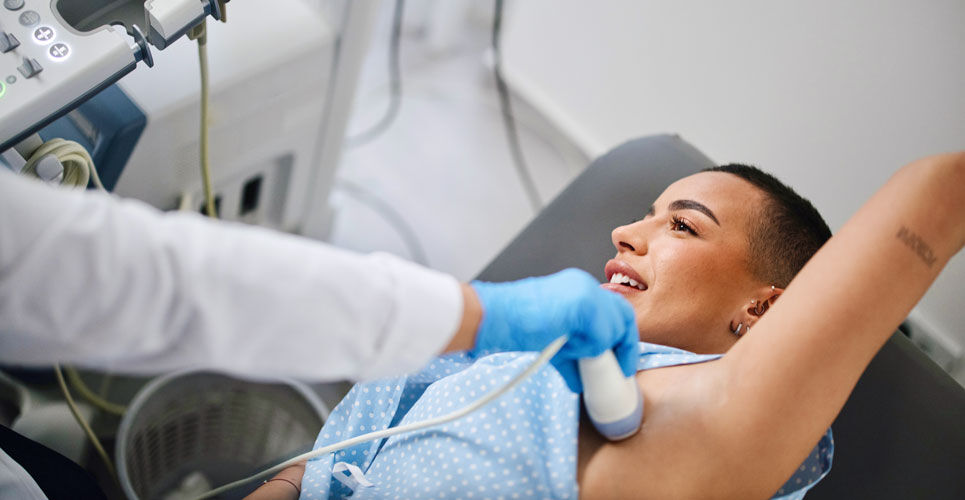An ultrasound AI system has been shown to distinguish between metastatic lymph nodes changes and those induced by a COVID-19 vaccine
An ultrasound AI system is able to differentiate between the malignant changes in lymph nodes because of metastatic breast cancer and those due to reactive changes induced after a COVID-19 vaccine, despite the similar appearance, according to the findings of a study by Spanish researchers.
Regional lymphadenopathy has been reported following a COVID-19 vaccination as has a case of cervical lymphadenopathy. However, it seems that lymphadenopathy is not necessarily an isolated adverse event following a COVID-19 vaccination. In a review of 15 studies including 2057 patients, researchers have observed an incidence of lymphadenopathy which ranged between 14.5% and 53% and persisted for longer than 6 weeks in 29% of patients following a COVID-19 vaccination. It is important that radiologists can distinguish between malignancy-induced changes and benign lymph nodes which have reacted after a COVID-19 vaccination particularly among oncology patients. In fact, in a study of five patients, axillary lymphadenopathy occurred after COVID-19 vaccination and the initial radiologic diagnosis raised concerns for metastasis.
In a previous study, the the same Spanish researchers developed an ultrasound AI system that was able to successfully detect the micro-structural and compositional changes that occur in lymph nodes due to metastatic involvement. Consequently, they wondered if the ultrasound AI system could be re-trained to differentiate between the malignant lymph node changes due to metastatic breast cancer (which was used in their previous study) from the reactive changes induced by a COVID-19 vaccine.
The ultrasound AI system was re-trained and tested with images containing benign lymph nodes affected by COVID-19 vaccination. They used receiver operating characteristic (ROC) curves to report on the performance of the ultrasound AI system in comparison to expert radiologists (who used a visual scoring method) for the differentiation between the metastatic and benign lymph nodes affected by a COVID-19 vaccination.
Ultrasound AI and radiologist performance
A total of 180 images from 154 patients were used in the analysis. This included 71 images (10 cases and 61 controls) used to re-train the model and 109 (36 cases and 73 controls) as part of the evaluation of the model’s performance.
When comparing the ability of the model and the radiologists to distinguish between metastatic and benign lymph nodes after a COVID-19 vaccination, the ultrasound AI model had an area under the curve of 88.4% compared to 62.6% for the radiologists. This gave a corresponding sensitivity of 77.8% and 41.7% for the ultrasound AI and radiologists respectively. Furthermore, the ultrasound model had an accuracy of 92.7% compared with 69.7% for the radiologists. In other words, the model had the potential to differentiate between unaffected and metastatic lymph nodes even when both look very similar.
The authors concluded that the ultrasound AI system could be used to differentiate between malignant and benign lymph nodes which changed after COVID-19 vaccination and called for future studies to confirm and validate these preliminary findings.
Citation
Coronado-Gutierrez D et al. Quantitative ultrasound image analysis of axillary lymph nodes to differentiate malignancy from reactive benign changes due to COVID-19 vaccination Eur J Radiol 2022

